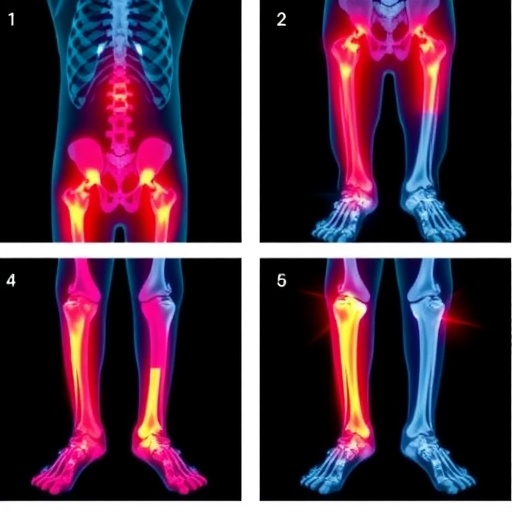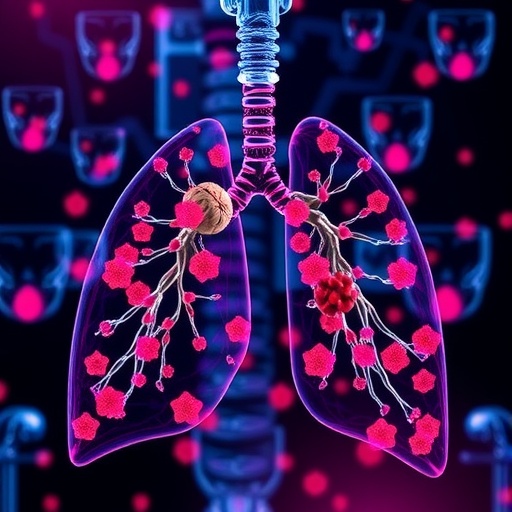In an era where artificial intelligence (AI) is revolutionizing various sectors, the medical field, particularly radiology, is no exception. Recent studies underscore the potential of AI technologies in improving diagnostic accuracy, especially for pediatric fractures. A groundbreaking study conducted by a team of researchers led by Pape, Deffaa, and Zimmermann, has shed light on how AI can significantly enhance the diagnosis of small lesions associated with high-risk fractures in children, which often encompass serious medicolegal ramifications.
Pediatric fractures remain a critical concern, particularly when considering the delicate nature of children’s health and the potential for misdiagnosis. Current diagnostic methods rely heavily on traditional imaging techniques, which may not always accurately identify small but significant lesions. The researchers’ investigation was prompted by the urgent need for faster and more reliable imaging interpretations, especially when these diagnoses can impact legal outcomes. The implications of incorrect diagnoses are profound, underscoring the necessity for innovative solutions in pediatric radiology.
The study’s core focus was on the diagnostic performance of AI algorithms in detecting small fractures, often missed by human radiologists. Utilizing a vast dataset comprising radiographic images, the researchers developed and trained AI models to identify high-risk pediatric fractures. The results were striking; the AI exhibited an impressive capability to accurately detect these fractures, often surpassing the performance of traditional diagnostic approaches. This is a pivotal finding that could transform how fractures in children are diagnosed, ensuring that critical lesions do not go unnoticed.
The implications of these findings extend beyond mere diagnostics. Lowering the risk of misdiagnosis can directly impact treatment protocols, reducing the chances of complications from untreated fractures. With the swift identification of high-risk injuries, healthcare professionals can institute timely and appropriate interventions. This efficiency not only enhances patient care but also minimizes the potential for legal challenges that may arise from misdiagnoses, a critical factor in today’s complex medicolegal landscape.
The researchers emphasized the importance of the AI’s reliability and accuracy. By integrating AI into the diagnostic workflow, radiologists can significantly enhance their interpretations, especially in ambiguous cases where human judgment may falter. The potential for AI to serve as a powerful adjunct to human expertise can lead to improved outcomes for pediatric patients, provided that the technology is implemented effectively and ethically within clinical practice.
Moreover, this study highlights a vital intersection between technology and healthcare, where advancements in AI are paving the way for more comprehensive diagnostic tools. The researchers acknowledged that while AI offers significant promise, it is crucial to maintain rigorous standards of safety and efficacy. The deployment of AI in medical settings must be accompanied by ongoing validation and assessments to ensure that these systems continuously meet the necessary clinical benchmarks.
Addressing the ethical concerns surrounding AI in medicine is also paramount. Ensuring patient confidentiality and data security while utilizing AI technologies is essential in maintaining trust between patients and healthcare providers. The research team called for stringent guidelines and frameworks to govern the usage of AI in diagnostics, emphasizing that the goal should be to enhance, rather than replace, the human element in patient care.
Looking toward the future, the potential for AI in pediatric radiology seems boundless. Ongoing advancements in machine learning and imaging technologies may lead to even more refined tools capable of accurately diagnosing a wider array of conditions. The hope is that AI will not only reduce the incidence of diagnostic errors but will also play a role in predictive analytics, allowing for preemptive measures based on risk assessments.
As the landscape of pediatric healthcare continues to evolve, the significance of research like that conducted by Pape et al. cannot be understated. Their findings are expected to ignite a renewed interest in the integration of AI within radiology departments nationwide, thereby fostering collaboration between technologists and medical professionals. The insights gleaned from this study may well serve as a springboard for future research initiatives aimed at further understanding the role of AI in diagnostics.
Moreover, these innovations may help elevate the standard of care for children seeking treatment for fractures. If integrated properly, AI could empower healthcare professionals to make more informed decisions, thus improving overall patient outcomes. The radiology community stands on the precipice of significant changes, driven by cutting-edge technology that has the potential to fundamentally alter practices for the better.
In conclusion, the integration of artificial intelligence into pediatric fracture diagnostics holds tremendous potential for enhancing diagnostic accuracy and patient safety. As this field continues to develop, it will be essential to navigate the journey with careful consideration of ethical standards and the human elements of care. The vision for a future where AI assists in timely and accurate diagnoses is rapidly materializing, thanks to the vital research being conducted today.
Subject of Research: The role of artificial intelligence in diagnosing pediatric fractures
Article Title: Small lesion–high risk: diagnostic performance of artificial intelligence in paediatric fractures with medicolegal impact.
Article References:
Pape, J., Deffaa, O., Zimmermann, P. et al. Small lesion–high risk: diagnostic performance of artificial intelligence in paediatric fractures with medicolegal impact. Pediatr Radiol (2025). https://doi.org/10.1007/s00247-025-06456-3
Image Credits: AI Generated
DOI: 10.1007/s00247-025-06456-3
Keywords: Pediatric fractures, artificial intelligence, diagnostic accuracy, radiology, medicolegal impact, healthcare technology.
Tags: advanced imaging techniquesAI algorithms in healthcareAI diagnostic accuracyArtificial Intelligence in Medicinehigh-risk fractures in childrenimproving pediatric radiologymachine learning in diagnosticsmedicolegal implications of misdiagnosispediatric fracture diagnosisradiographic image analysisradiology innovationssmall lesion detection





